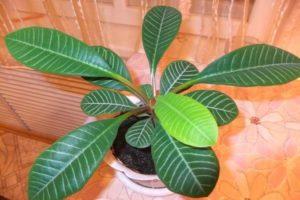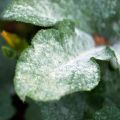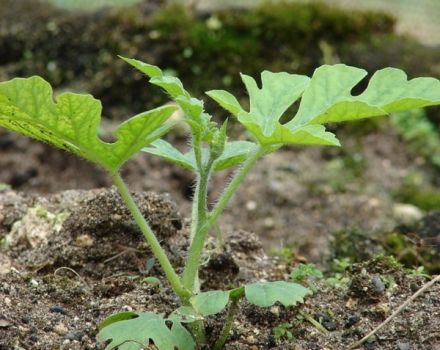Rules for cutting chrysanthemums at home, propagation methods
Chrysanthemums are valuable because their flowering occurs at a time when the rest of the plantings are already entering a state of dormancy. They easily multiply in several ways, one of which is by cutting the chrysanthemums they like. This procedure is simple, even an inexperienced gardener can do it. Plants easily take root, and, mainly in autumn, bloom inflorescences of various sizes and colors. Further information on the nuances of chrysanthemum cuttings in different periods.
Features of the procedure at different times
You can cut chrysanthemums in spring and autumn. The procedure allows you to preserve the varietal characteristics of the crop.
Spring-summer
For spring cuttings in the spring, a mother bush is taken out of the basement, from which shoots begin to grow rapidly in the warmth. When they reach a length of 10-12 centimeters, they are cut for grafting. The breeding procedure can also be done in summer by cutting off cuttings and planting them in damp ground. With good care, the garden flower has time to bloom this fall.
Autumn
For autumn cuttings, chrysanthemum bushes are cut off, after 2 weeks they are brought into a warm room. When the quickly emerging shoots reach 8-10 centimeters, they are separated and planted separately. The peculiarity of autumn cuttings is that the seedlings must be separated from the mother plant by hand, and not cut with a knife.
How to cut
For propagation by cuttings, the best bushes are used. They must be strong, free from signs of diseases and pests.
Timing
In spring, chrysanthemums are cuttings, depending on the timing of ripening, from March to May. The earlier the variety, the earlier the procedure begins. You can also separate cuttings and plant them in the ground throughout the summer. In the fall, the mother bush is dug just before the frost.
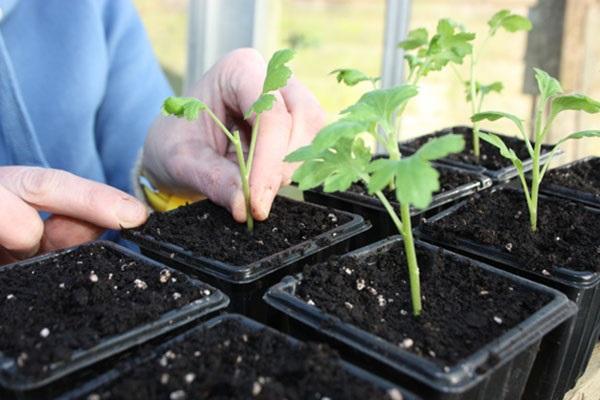
Cuttings in spring
For cuttings, strong, resilient shoots are chosen. Each cut cut should have 2-4 internodes. The lower part of the trunks is freed from the leaves. This is done so that the shoots do not rot during rooting. The remaining leaves are shortened by ⅓.
Harvesting mother liquors in the fall
In order for chrysanthemums to bloom profusely and effectively in the coming season, you need to carefully choose mother plants. They must be well-rooted, healthy and strong. Bushes are dug up in the fall, before the onset of persistent frosts.
Storage of mother liquors in winter
Throughout the winter, you need to monitor the indoor temperature.It should not rise above +4 ° С, otherwise shoots may appear prematurely. The humidity of the surrounding air is equally important. If the cellar is damp, the chrysanthemums do not need additional watering. The dried soil is slightly irrigated with water.
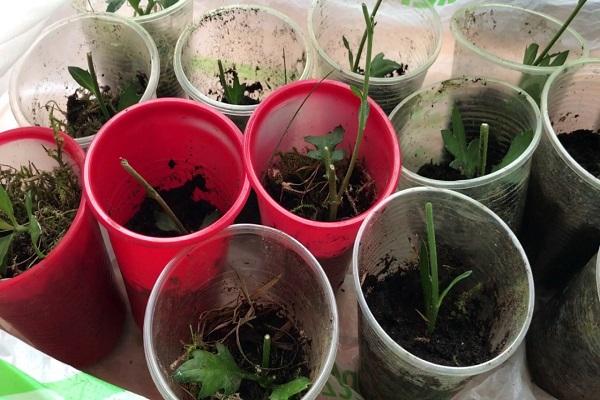
Planting and preparation of mother liquors
To prepare the uterine bush, the following procedures are carried out:
- at a height of 5 centimeters from the surface of the soil, the entire ground part of the bushes is cut off;
- chrysanthemums are dug up and placed in a bowl with a lump of earth;
- the root system is covered with sand.
The mother bush is placed in a cellar, where it will be stored until spring.
Summer cuttings of chrysanthemums
For summer cuttings, the stems that have not yet had time to woody are chosen. The top is cut off with a height of 10-12 centimeters, which is planted in the shade. To prevent evaporation of moisture from the cutting, it can be covered with a glass jar. The seedlings are watered, and after 2-3 weeks, roots will begin to appear.
Important! A sharp, disinfected knife is used for grafting.
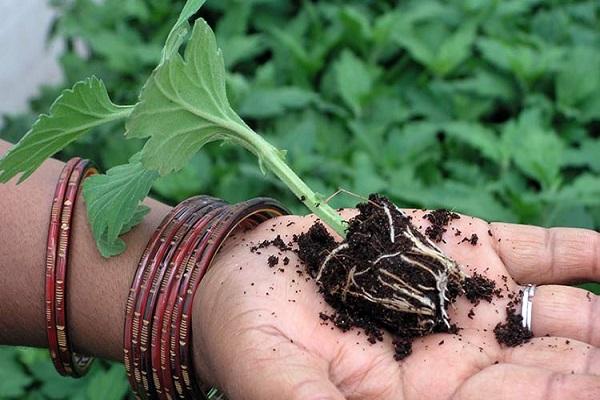
Reproduction from a bouquet at home
The procedure is straightforward. Shoots that are in a humid environment for a long time will sooner or later take root. The main condition is that the water must be changed every day so that it does not acidify and, as a result, rotting of the shoot. For the same reason, you must remove all leaves in a humid environment.
How to prepare cuttings
Cuttings are cut with a sharp knife, but not at the very root, but leaving shoots 2-2.5 centimeters long on the mother plant. In the future, shoots will grow from them, which can also be rooted. Weakened, thin cuttings are removed from the bush, since viable chrysanthemums will not grow from them. The lower part of the cut shoots is cleaned from the leaves.
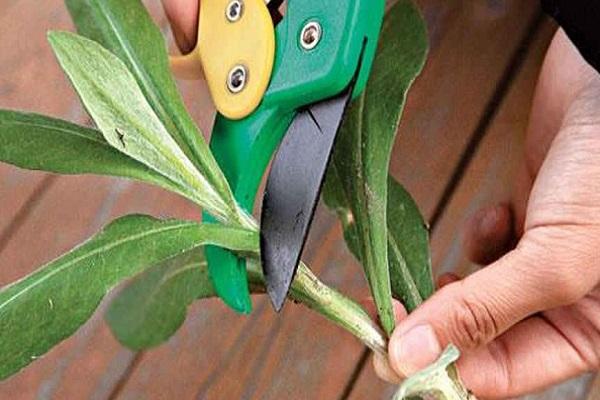
Planting the cuttings in the substrate
For growing the cuttings, a light, loose substrate is prepared, consisting of sod land, peat and sand. The landing procedure is as follows:
- drainage from expanded clay or small stones is laid at the bottom of the planting box;
- prepared soil is poured on top;
- cuttings are deepened by no more than 2.5-3 centimeters;
- a small layer of river sand is poured on top.
Cuttings are planted at a distance of 4-5 centimeters from one another. While developing, they should not touch the crowns.
Care rules
Caring for chrysanthemums is to create high humidity for quick rooting of cuttings, watering, picking, feeding.
Temperature regime
A box with landings is exposed in a room with a temperature of 15-18 ° C. In a warmer place, cuttings will root faster, but there is a greater chance that they will rot. The room should be well lit. With a lack of light, the plantings are illuminated artificially.
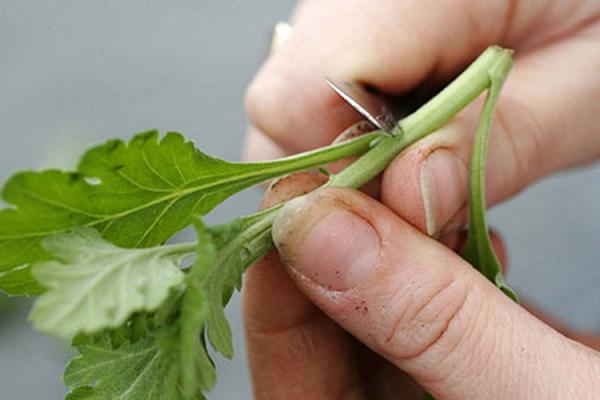
Humidity
Plantings require high humidity for rooting. To increase it, the box with cuttings is covered with foil. It should cover the seedlings in such a way that air does not penetrate to them from the sides. Remove the film after the formation of roots on the cuttings.
Moistening the substrate
When chrysanthemums are kept under the film, they do not need frequent watering. Care must be taken to keep the soil moist, but not wet. Excess moisture can provoke fungal diseases.
After rooting
When the cuttings begin to grow, it means that they have taken root and their development has begun. So that they do not interfere with each other, a pick is made: a distance of 8 centimeters is left between the plants. Excess bushes can be rooted by planting them in separate containers. Further care consists in watering, feeding once a week with mineral fertilizers.

Other breeding methods
Chrysanthemums reproduce in several ways. In addition to grafting, the method of cultivation by layering is used, as well as dividing the bush.Another method is seed, which is most often used not by gardeners, but by breeders.
Dividing the bush
Chrysanthemum multiplies easily by dividing the bush. For this, 3-year-old plants are chosen. The procedure is performed as follows:
- bushes are dug out together with a clod of earth;
- long shoots are shortened;
- with a sharp knife, the bushes are neatly divided into several parts;
- the cuttings are planted in pre-prepared holes.
The best time for breeding is mid-spring.
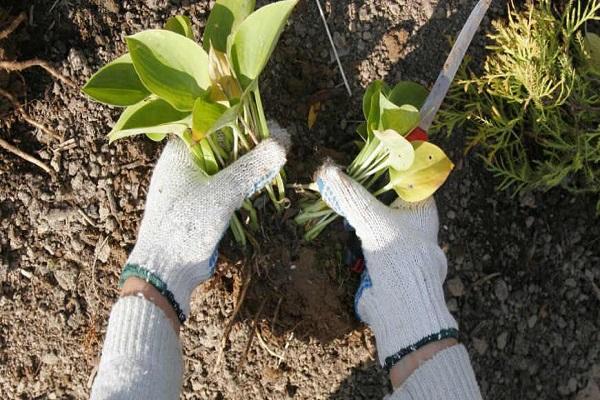
Layers
This method is easy to propagate tall chrysanthemums. When the shoots stretch well upward, they can be bent to the ground, pinned in the middle. The place of contact with the ground is earthed up, watered with water. For the winter, the shoots are covered with spruce branches. In the spring, cuttings with their own roots and shoots are dug up, transplanted to a permanent place.
Seeds
This method can be used to breed chrysanthemums, both initially at home, and immediately by sowing seeds in open ground. In both cases, the crops are covered with a foil so that in a humid environment they take root faster. When the 3rd and 4th leaves appear on the seedlings, they are thinned out. Young plants are fed several times per season.
Note! Home-grown chrysanthemum cuttings are hardened before planting in open ground.
Planting planting material in the ground
To grow spectacular chrysanthemums by autumn, cuttings are planted in a permanent place at the end of spring. The landing site is selected illuminated by the sun, not blown by the wind. Chrysanthemums will thrive on loamy, organic-rich soil. Bushes are planted in cloudy weather, in holes 25-30 centimeters deep. Plants are watered and mulched with peat.
